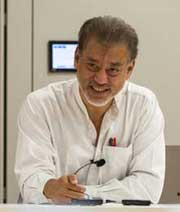Improving Healthcare for All
KUALA LUMPUR and BERN, Jul 19 (IPS) - In 2015, almost all heads of government in the world committed to the United Nations’ Sustainable Development Goals (SDGs), including universal health coverage (UHC). This was consistent with the World Health Organization’s commitment to Health for All.
The COVID-19 pandemic exposed most countries’ under-investment in public healthcare provisioning and other weaknesses. Clearly, health system reforms and appropriate financing are needed to improve populations’ wellbeing.

Instead of helping, more profit-seeking investments and market ‘solutions’ in recent decades have undermined UHC. Health markets the world over rarely provide healthcare for all well. Instead, they have increased costs and charges, limiting access. Worse, public funds are being diverted to support profits, rather than patients.
Health inequalities growing
Recent decades have seen healthcare in many developing countries trending towards a perceived two-tier system – a higher quality private sector, and lower quality public services. Many doctors, especially specialists, have been leaving public service for much more lucrative private practice.
This ‘brain drain’ has worsened already deteriorating public service quality, increasing waiting times. Hence, more of those with means have been turning to private facilities. As private medical charges are high in developing countries, many who can afford private health insurance, buy it.
If unchecked, the gap – in charges and quality – between private and public health services will grow, increasing disparities between haves and have-nots. Social solidarity implies cross-subsidization in health financing – with the healthy financing the ill, and the rich subsidizing the poor. Social solidarity also enables universal coverage and equitable access.
Better healthcare for all
Most governments need to strengthen public provisioning of comprehensive health protection with adequate financing. Meanwhile, healthcare costs have gone up due to more ill health, the rising costs of new medical technologies, privatization and less public procurement.
Everyone – nations as well as families – faces more unexpected health threats, worsened by rising catastrophic and other medical expenses, more economic vulnerability, greater income insecurity, declining public provisioning, and costlier coping strategies.

‘Premature’ death, disability and illness have meant losing billions of years of healthy life, largely due to preventable non-communicable diseases (NCDs). Although they cause many health losses, relatively little public health spending goes to NCD prevention.
Spending and outcomes
Most countries, including in the developing world, have seen rising healthcare spending. But there is no direct relationship between health expenditure and wellbeing. Hence, more spending does not ensure better outcomes, whereas appropriate public healthcare provisioning does.
Although health spending has been rising in many developing countries, it has generally remained low in relation to income. Government health services were already facing fiscal constraints before the pandemic. To cope with COVID-19, public health expenditure in many middle-income countries spiked.
Chronic underinvestment in public services has undermined healthcare overall. Many underfunded systems have nonetheless improved health conditions, reducing morbidity and mortality. Decent health outcomes, despite relatively low health spending, imply greater public expenditure ‘cost-effectiveness’ or efficiency.
Nonetheless, much more could be achieved with better policies, increased spending and more appropriate priorities. Thus, reducing child and maternal mortality, besides improving sanitation and water supplies, have significantly raised life expectancy in developing countries.
Improving policy
To enhance wellbeing, health systems must better protect people from current and future threats and challenges. Better public healthcare financing – with absolutely and relatively more, but also more appropriate funding – seems most important.
Developing country governments are often fed oft-repeated, but doubtful claims that current government healthcare spending is too high, and health insurance is necessary to fill the funding gap. Instead, official revenue should mainly fund health budgets to ensure efficiency and equity.
Health promotion should involve more preventive efforts. By mainly focusing on curative interventions, most government spending and policy priorities neglect determinants of wellbeing, including inequities. Some WHO recommended policies deemed most cost-effective target tobacco products, harmful alcohol use and unhealthy diets.
Policy coherence
To better address overall wellbeing, a more comprehensive and integrated approach should integrate health with related public policies. Affordable healthier food options, physical exercise and healthier lifestyles deserve far greater emphases.
For example, a cheap, but nutritious, safe and healthy daily school feeding programme in Japan – introduced a century ago, when it was still quite poor – has ensured life expectancy in the archipelagic nation has been the world’s highest for decades.
An ‘all-of-government’ approach should ensure meals planned by dieticians, mindful not only of good nutrition, but also of local food cultures, costs, safety and micronutrient deficiencies. With a ‘whole-of-society’ approach, involved parents can ensure schoolchildren are fed safe food from farmers not using toxic pesticides.
This can be ensured with the food or agriculture ministry’s participation. Farmer organizations can be contracted to supply needed foodstuff with initial support from government agricultural extension services, not corporate salesmen. This, in turn, improves the safety of all farm produce, ensuring healthy food for all.
Health reform recommendations should prioritize governments’ major commitments – to the people and the international community – of ‘universal health coverage’ to ensure ‘health for all’.
Nazihah Noor is a public health policy researcher. She led two reports on health system issues in Malaysia, Social Inequalities and Health in Malaysia and Health and Social Protection: Continuing Universal Health Coverage. She is currently pursuing a PhD in public health in Switzerland.
IPS UN Bureau
Follow @IPSNewsUNBureau
Follow IPS News UN Bureau on Instagram
© Inter Press Service (2023) — All Rights Reserved. Original source: Inter Press Service
 Global Issues
Global Issues